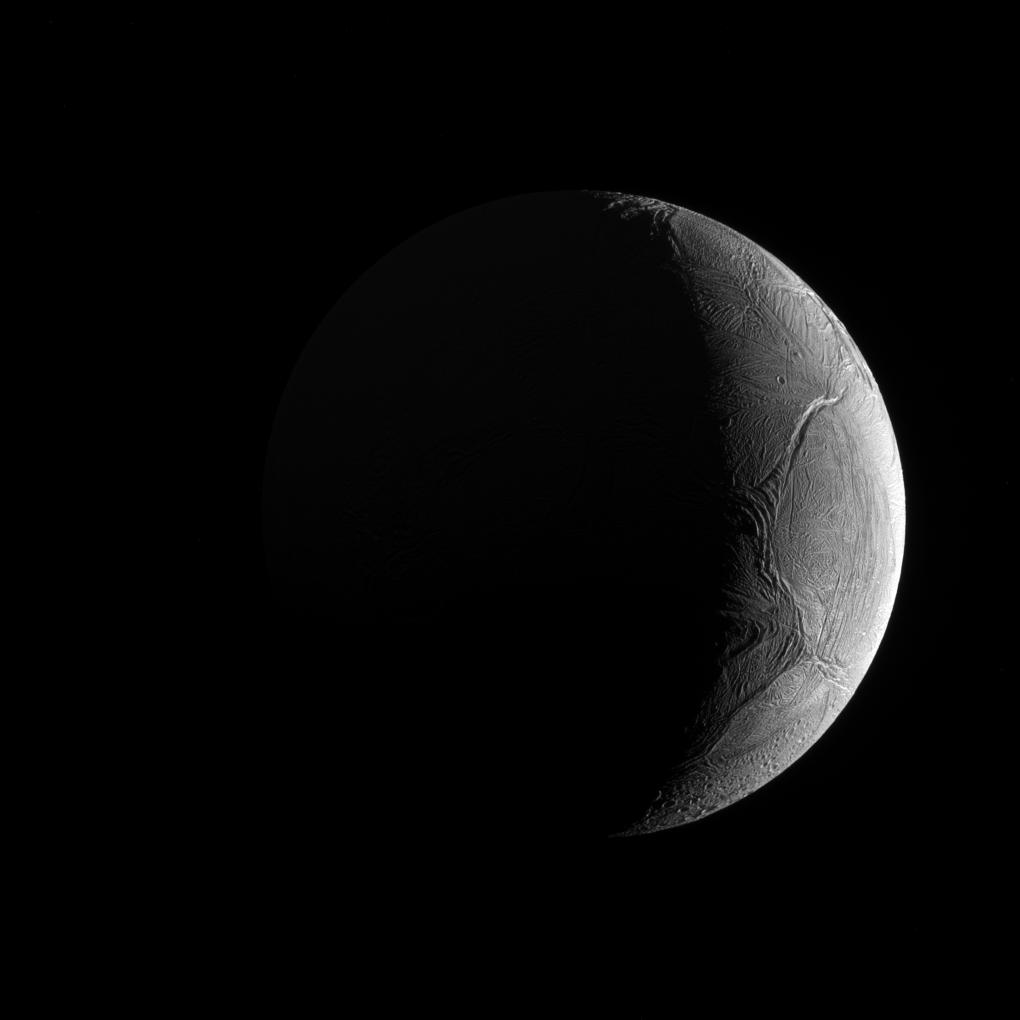2023年12月16日
Crescent Enceladus
Image Credit: Cassini Imaging Team, SSI, JPL, ESA, NASA
Explanation: Peering from the shadows, the Saturn-facing hemisphere of tantalizing inner moon Enceladus poses in this Cassini spacecraft image. North is up in the dramatic scene captured during November 2016 as Cassini’s camera was pointed in a nearly sunward direction about 130,000 kilometers from the moon’s bright crescent. In fact, the distant world reflects over 90 percent of the sunlight it receives, giving its surface about the same reflectivity as fresh snow. A mere 500 kilometers in diameter, Enceladus is a surprisingly active moon. Data and images collected during Cassini’s flybys have revealed water vapor and ice grains spewing from south polar geysers and evidence of an ocean of liquid water hidden beneath the moon’s icy crust.
Tomorrow’s picture: the same color
蛾眉相的土卫二
影像提供: Cassini Imaging Team, SSI, JPL, ESA, NASA
说明: 这幅从阴影里望出去的卡西尼号太空船影像,呈现了土星的内卫星土卫二(Enceladus)面向土星的半球。卡西尼号的相机于2016年11月,在距离这颗卫星的明亮蛾眉状表面约130,000公里处,相机几乎是直指往太阳时,拍下了这张上端是北方的吸睛影像。这颗遥远的天体反射了超过90%的入射阳光,也因此,它的表面的反射率和新雪相当。直径只有500公里的土卫二,是一颗意外活跃的卫星。从卡西尼号飞越时所取得的数据及影像,发现其南极有会释出水汽和冰粒的喷泉,显示它的冰层之下,可能藏有液态水海洋。
明日的图片: the same color







